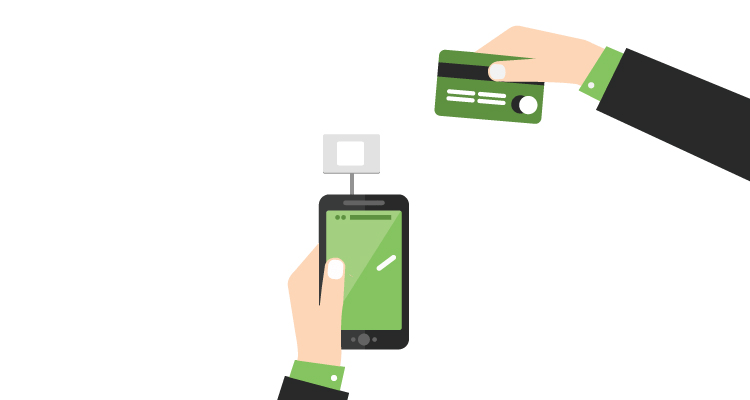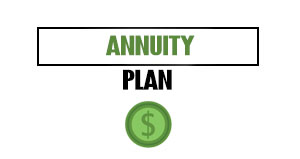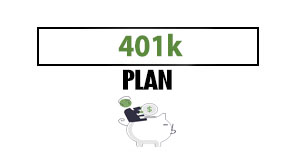In September 1998, two things happened that would change the Internet… and the world. One was the launch of a search engine with a strange name. Google would go on to dominate the Web, allowing users to sort through billions of Web pages in a fraction of a second to find the information they needed. The Internet would never be the same again. The other was the was the launch of Fieldlink, a security firm that aimed to store encrypted information on Palm Pilots and PDAs. That name might not be as familiar; Palm Pilots and personal digital assistants have gone the same way as the Filofax and the blotter pad. But the company marked the first steps on a road that would generate changes no less important than those created by Google, and create an entirely new industry: fintech. Fintech eventually gave birth to things like Paypal, and Ecommerce Payment Solutions.
What happened to the founders?
Within three months, Fieldlink’s founders, Peter Thiel and Max Levchin, had founded Confinity, which later merged with Elon Musk’s X.com to create a new business. In June 2001, X.com became PayPal, and a new Internet giant was born. Fieldlink’s original vision of building a digital wallet that could be more secure than a physical wallet was about to become real.
That company has gone from strength to strength. In 2000, PayPal teamed up with Ebay, allowing the auction giant to accept payments on behalf of its sellers, and giving the platform access to 100,000 new customers. In 2002, with PayPal now serving a million customers, eBay reached into its own resources to pay $1.5 billion to buy the company outright.
The marriage didn’t last a lifetime. In 2014, eBay spun off PayPal, freeing the company to make deals and provide services to a range of competing companies. For PayPal, the move has been liberating. In the fourth quarter of 2016, nearly $100 billion passed through PayPal’s servers. That money was used to pay for purchases on online auction sites, to pay freelancers for their services, to pay businesses for their products, and to pay back friends and family for loans and outlays. Of that $100 billion, PayPal kept just under $3 billion, a take rate of about 3 percent. PayPal now has around 200 million active accounts.
The basic functions offered by PayPal have remained largely the same. Users can send invoices to clients or customers, receive funds in their digital wallets and add funds from their bank accounts and credit cards. PayPal has now added some interest payments as a way of encouraging clients to leave their funds in their wallets instead of sending them directly to a bank, but those key features have remained unchanged.
The benefits to businesses
So too has the main benefit that PayPal offers businesses: not just the ability to accept payments online but the opportunity to add a payment feature to their own websites. The deal with eBay that first put PayPal on the map has now been replicated by companies large and small. In addition to PayPal’s own API, businesses can choose from a range of different APIs that can quickly put a checkout button on their website or add a complete payment system.
PayPal Checkout, for example, gives “smaller merchants with a basic site and inventory” a Buy Now HTML button from its PayPal Payments Standard program. More complex sites can use an Express Checkout integration that minimizes the steps that buyers have to take when they check out. PayPal places on top of the merchant’s site a window that allows them to make their payment. PayPal has since expanded this feature to include One Touch. Combined with Express Checkout, customers are able to stay logged in for six months at a time. PayPal emphasizes the benefits that few clicks can have on conversions.
A business that use a PayPal integration get a feature that would have cost lots of time and money to build for themselves, and save their customers the extra — and sales-killing — step of having to enter their payment details. PayPal gets access to a whole new customer base. For users, that payment service provision is one of the unseen aspects of PayPal. However, it’s part of the infrastructure that now underpins how business is conducted on the Internet.
Technological development
For PayPal, the technological development has been towards greater speed for users and more attractive integration for buyers. But one big deal still escapes them. Customers of Amazon, the Internet’s biggest online store don’t make their payments through PayPal. The reasons include PayPal’s relatively high fees. While Amazon would be in a position to negotiate down its standard rate of 2.9 percent plus $0.30 for US transactions in the same way that big retailers like Walmart have been able to negotiate with credit card companies, it’s unlikely that PayPal would be able to cut its rates low enough to satisfy Amazon. And with more than 300 million active customers whose payment details are already in its databases, Amazon has little to gain from PayPal’s quick checkout process; Amazon’s own one-click payment system couldn’t be any faster.
In fact, Amazon is now one of PayPal’s competitors. Just as the company has turned its servers into a resource that it can rent out to generate revenue, so it has also monetized its payment system since 2007. Fees are similar to PayPal’s and buyers already registered with Amazon won’t need to enter their payment details again. Despite that apparent convenience, the system is relatively unpopular. Clients might include Patagonia, Jockey, and Blick, but overall usage may be as low as 15,000 websites. Retailers may well be reluctant to give some of their revenues to a company that’s also their biggest competitor, especially when they have alternatives.
Let’s talk alternatives
And there are plenty of alternatives. Stripe supplies a payment service for more than 100,000 companies in more than 100 countries. The company emphasizes its neat code and “advance machine learning” that crunches data to gain a better understanding of fraud. Its investors include Peter Thiel, Max Levchin, and Elon Musk.
Authorize.net is even more attractive… and even predates PayPal. The company was founded in 1996. While PayPal’s individual customers and its deal with Ebay might have given it enough of a boost to make it an industry leader, Authorize still serves no fewer than 440,000 merchant customers. Again, prices are similar to PayPal’s but Authorize’s payment gateway is browser-based and hosted so merchants don’t need to install or maintain software.
The payment system offered by Due works in a similar way. We too provide an API that lets businesses accept payments on their websites. We are finding that there’s demand among merchants for a payment platform that’s fast, reliable, simple and flexible.
In general, though, the market for e-commerce payment platforms is now highly competitive. Merchants have more than a dozen leading companies to choose from. All of them offer solutions that allow them to accept payments. The decision about which platform to use will depend on a number of factors.
The factors
First, the payment gateway has to integrate with the eCommerce platform being used by the merchant. It is possible to turn a WordPress site into an online store, for example. But not every payment gateway will be compatible with WordPress.
Accessibility will be an issue. Stripe emphasizes its international offices and at Due, we accept multiple foreign currencies, but not all eCommerce payment solutions or platforms will work in every jurisdiction. The choice of payment platform will in effect be limited by the number of service providers operating in the area.
Once the technical requirements have been met, merchants will be free to make a choice. The cost will be a factor but fees charged by payment platforms are already highly competitive. Solution providers are hemmed in by the commissions and fees they have to pay the banks. While some large corporations will have the ability to talk down rates (and at Due, we’ll beat any lower rate you can find for accepting credit card payments), in practice, many payment platforms have already cut their fees as low as it’s possible to go.
Usability
A more important factor then will be the usability. Merchants don’t want to lose customers between the decision to buy and the checkout process. The reason that both Amazon and PayPal have put so much effort into minimizing the number of clicks between the decision to buy and the placement of the order is that they understand that the moment someone has to enter their credit card details or their password is the moment that regrets and doubts start to lower sales. The design of the payment platform, its ease of use and the way in which it fits into the website will all be a major factor in the choice of payment platform — more important, in fact, than the ease of implementation for the merchant.
Finally, merchants might also consider the speed with which they can access their funds. In practice, though, this often comes down to the degree of trust that the platform can place in the merchant. The greater the volume of transactions frequency of use, the more trust the merchant wins. Soon, the funds appear in the merchant’s bank account.
Ecommerce payment solutions
Ecommerce payment solutions are the most mature part of fintech. Development of the first platforms began more than twenty years ago. Some of those early platforms are still in use. The result of that longevity (at least in Internet terms)is an environment that’s highly competitive. Fees have fallen about as low as they can go. PayPal’s 3 percent take makes for a very small profit margin and is typical of the industry. As the company offers more free services, that general profit margin will only shrink. That makes it even harder for ecommerce payment platforms to lower fees.
Attention has also been paid to implementation so that businesses can take APIs and work solutions into their own websites. That would keep users on their sites and reducing the steps required to check out.
For any business taking orders online, the choice will boil down to convenience/preference, rather than any major differences between platforms. It might seem strange to talk about an industry little more than twenty years old as being mature. But in Internet terms, twenty years is a long time. This sector at least shows all the signs of maturity and stability with plenty of competition.




